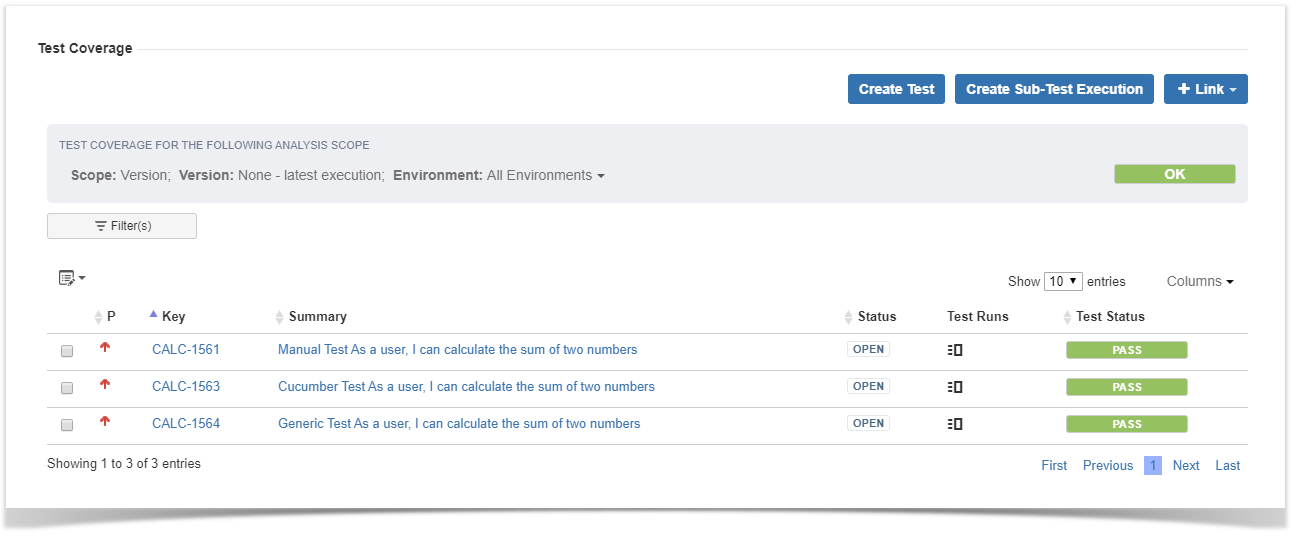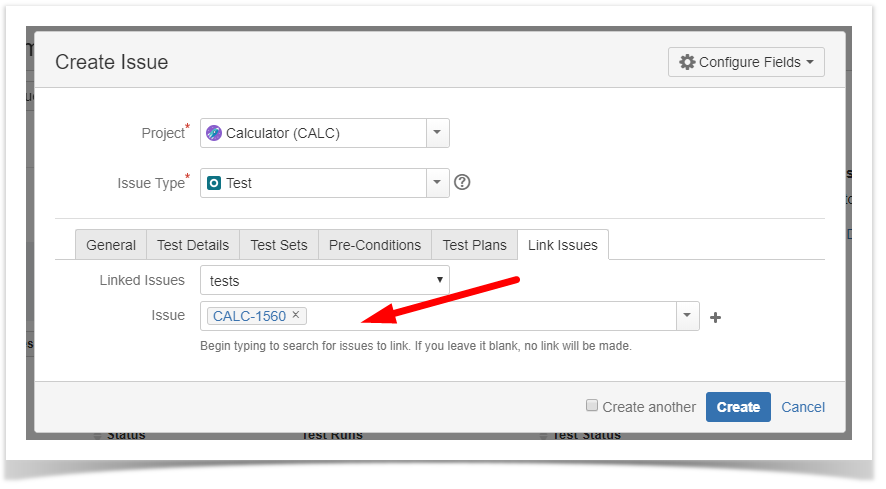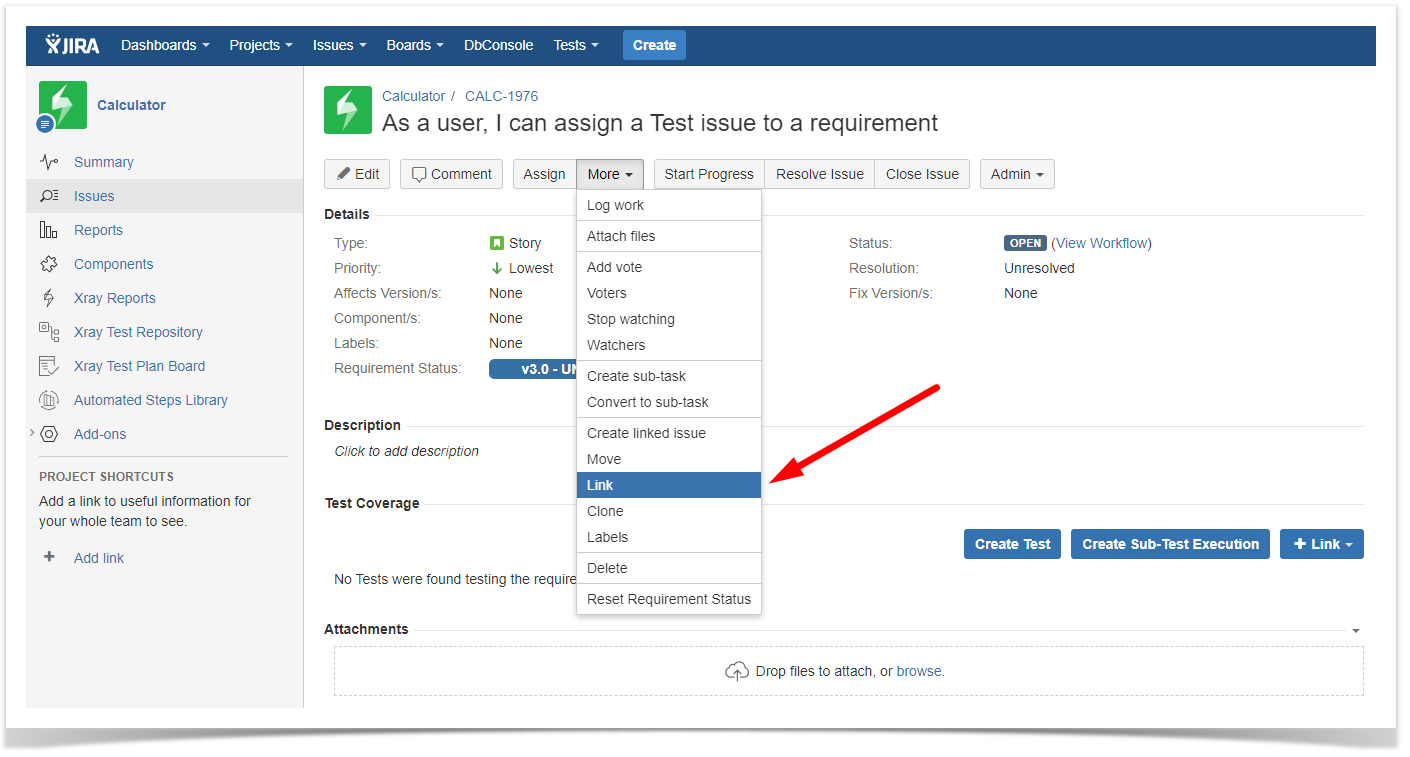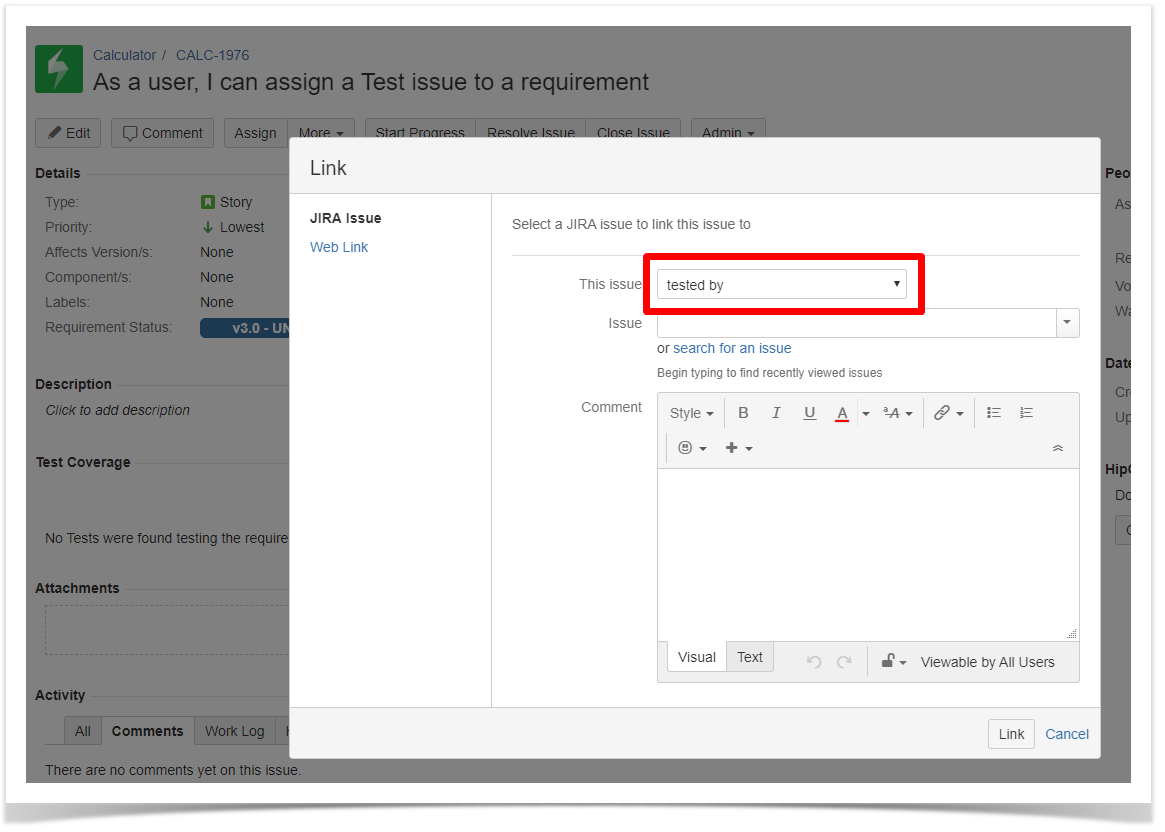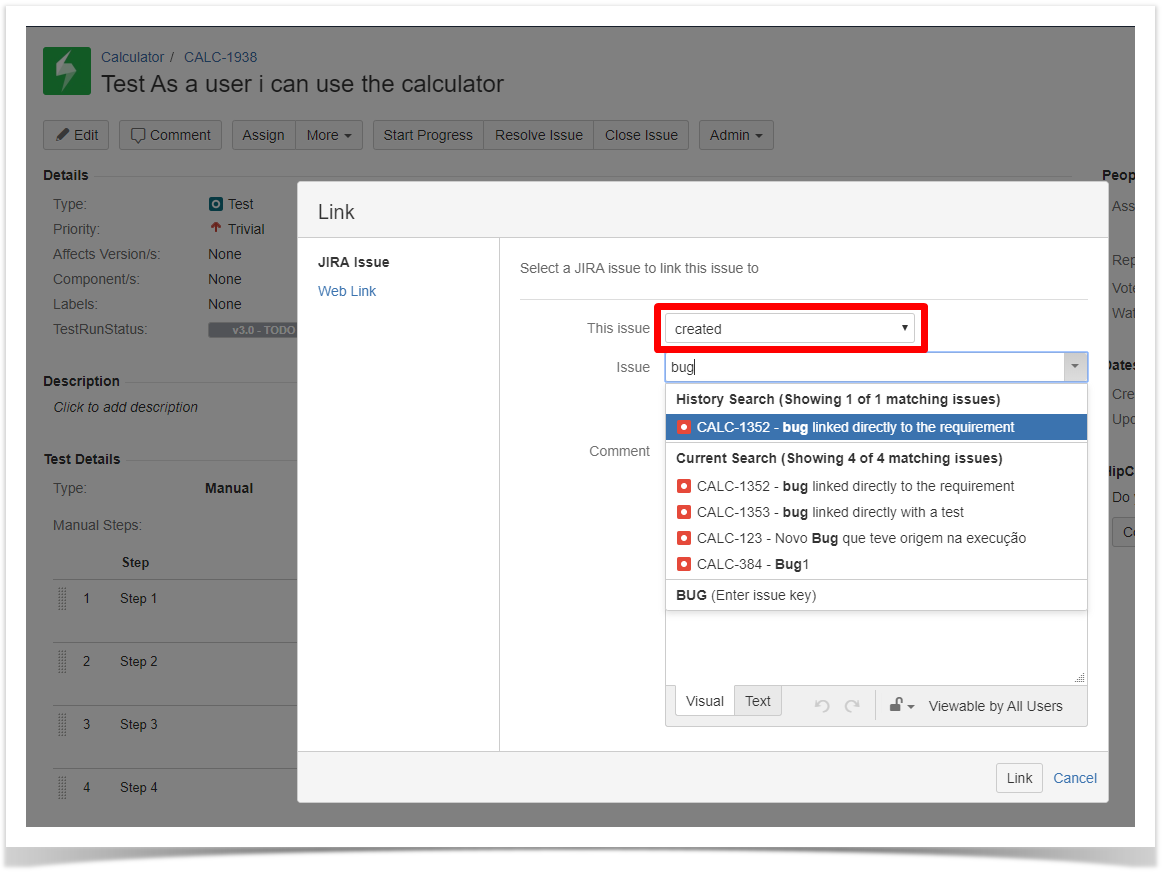Page History
...
Within a Requirement issue, a web panel named "Test Coverage" is provided by Xray. This panel allows users to cover an issue with Tests and (or Test Sets) and also analyze the status of the requirement in terms of testing based on the latest execution results for different scopes.
...
In this panel, you can perform actions such as create a new Test or a Sub-Test Executioncreating Tests automatically linked to the requirement and/or link existing Tests and Test Sets to the requirement. . Sub-Test Execution issues can also be created directly from this location.
A data table is used to manage all the Tests and Test Stets that are associated with the issue. The data table can be filtered, sorted and configured by setting the visible columns. Using the data table is also possible to remove Tests (or Test Sets) individually or via bulk action.
| Info | ||
|---|---|---|
| ||
Defect issues can also be covered by Test cases just like Requirements. In this case, the defect issue types (e.g. Bug) must also be mapped as a Requirements issue types in Xray global configuration. |
How to cover a Requirement
...
In order to cover a requirement issue with Test cases, you need to create Jira issue links between the requirement and Test or Test Set issues. It is also possible to create new Tests directly from the Requirement issue.
- Associate Tests or Test Sets (using the Xray issue picker)
- Associate Link Tests or Test Sets (using plain Jira issue Links)
Create Tests
This action allows you to access the create issue dialog, with some preset field values such as "Test" issue type and link to the requirement issue.
...
Associate Tests or Test Sets (using the Xray issue picker)
This option allows you to create Jira issue links between the Requirement and Test or Test Set issues thus covering the requirement with Test cases.
...
This operation can be performed using the Issue Picker Dialog which allows you to search, and select multiple issues to link with the Requirement. JQL searches are also possible. This dialog replaces the native Jira issue link dialog making it easy to associate Tests (or Test Sets) with requirement issues.
Associate Tests or Test Sets (using plain Jira issue Links)
Because the association between Requirement issues and Test (or Test Set) issues is done using Jira issue Links, you can just use the Jira issue linking actions as well.
| Info | ||||||
|---|---|---|---|---|---|---|
| ||||||
Xray uses specific Jira issue link types for associating Requirements and Tests (or Test Sets). These issue link types are installed by Xray automatically. They are:
These issue link types can be used explicitly by users to associate Requirements with Tests. The Defect issue link type is used by Xray when defects are created upon executing tests. In this case, we have relations such as Defect1 "created by" Test1. Whenever creating Tests from Requirements or Defects, Xray will always default to the "Tests" issue link type. |
From the Requirement issue view screen
Step 1: Open the Requirement you wish to associate a Test with. In the given example, New Feature issue types are mapped as Requirements.
Step 2: Select More > Link. The Link screen will appear.
Step 3: On the This issue field, select the tested by option.
Step 4: In order to select the Tests or Test Sets to be associated, you can:
- Input the desired Test/Test Set Issue Key on the Issue field;
- Click on the Down Arrow on the Issue field and select the Test from its History Search list;
- Click on the search for an issue link to use the Find Jira issues browser;
Step 5: Click Link.
From the Test issue view screen
Step 1: Open the Test you wish to associate a Requirement with.
Step 2: Select More > Link. The Link screen will appear.
Step 3: On the "This issue" field, select the "tests" issue link type.
Step 4: In order to select the Requirements to be associated, you can:
- Input the desired Requirement Issue Key on the Issue field;
- Click on the Down Arrow on the Issue field and select the Requirement from its History Search list;
- Click on the search for an issue link to use the Find Jira issues browser;
Step 5: Click Link.
Tests data table
Once you have already Tests or Test Sets covering a requirement issue, you'll be able to see a data table provided by Xray, directly below the Test Coverage analysis scope section.
This data table will display contains all the Tests that are associated with the Requirement. Test Sets are automatically expanded as . This means that all the Tests from Test Sets associated with the Requirement will be also displayed on the table direclty.
The rightmost column on this data table is the status column that displays the latest execution status of each Test, according to the analysis scope selected.
...
The summary view presents the fields field names and values applied in the active filter. When these exceed the available space "..." are added and all information is visible in the tooltip.
...
A confirmation message is always presented. When within the selected tests, are tests that where were added via a Test Set link(s), they cannot be removed separately, so by confirming the operation, the test set link(s) to the requirement as well as the links to all the tests they include will be removed.
...
The user can then click on the Test Run to go to the execution page.
| Info | ||
|---|---|---|
| ||
For more details, please check the Coverage Analysis page. Here you can find all the areas where you can take advantage of the coverage analysis such as the entities (Requirements, Tests, Test Sets) and also reports. Also, make sure to check the Understanding coverage and the calculation of Test and requirement statuses TTT article if you need to learn how is the Coverage status calculated in more detail. |
Creating Sub-Test Executions
...

